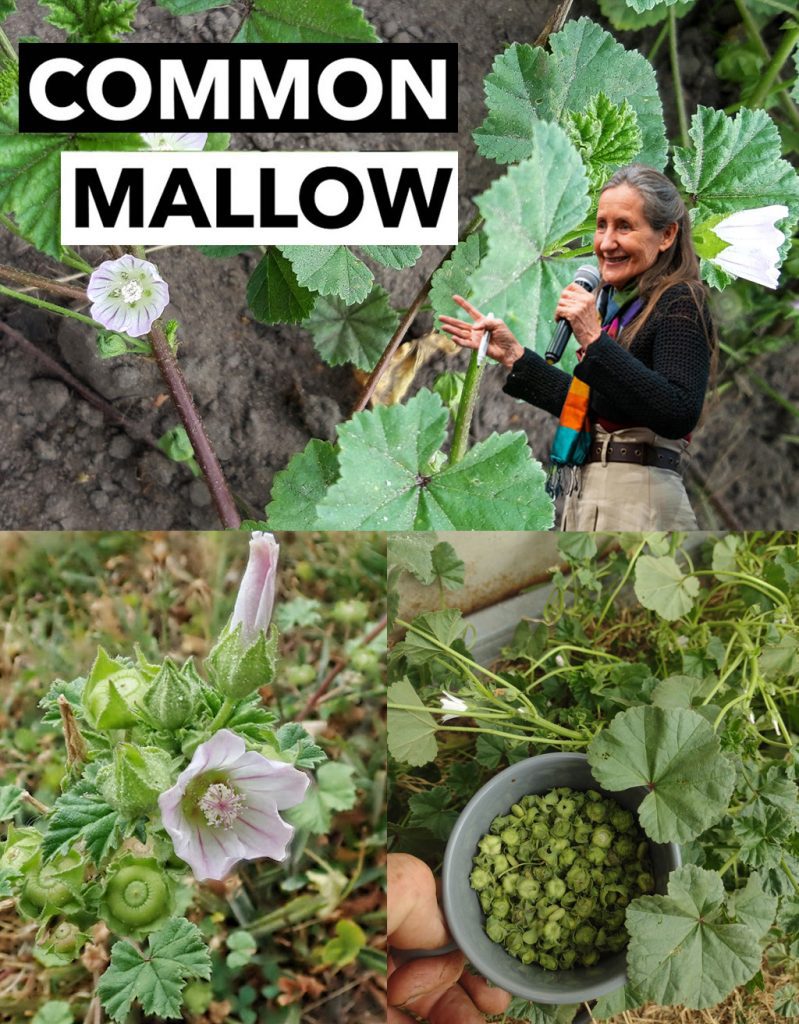Common Mallow (Malva sylvestris)—also known as High Mallow—has been valued since ancient Greek and Roman times as both a food and a medicine. Its incredible soothing properties come primarily from its high content of mucilage, a gelatinous substance that coats and protects irritated mucous membranes.

Here are the top 10 health benefits of Common Mallow leaves and flowers:
1. Soothes Respiratory Ailments
Mallow is a traditional remedy for the entire respiratory tract. The mucilage forms a protective film over the throat and lungs, offering relief for:
- Dry, Irritating Coughs
- Sore Throats
- Bronchitis and other respiratory inflammation
2. Relieves Constipation (Mild Laxative)

The mucilage in the leaves and flowers has a gentle, mildly laxative effect. It absorbs water and swells, softening stool and promoting regular, comfortable bowel movements without irritating the intestinal lining.
3. Protects the Digestive Tract
Mallow is categorized as a demulcent, meaning it soothes internal irritation. It is traditionally used to ease symptoms of:
- Gastritis
- Stomach Aches
- Peptic ulcers (by protecting the stomach lining)
4. Supports Skin Healing and Soothing (Topical)
Applied externally as a poultice or compress, mallow provides powerful relief for a variety of skin issues:
- Soothes Sunburn and Minor Burns
- Relieves inflammation from eczema, dermatitis, and rashes
- Helps heal minor cuts, sores, and insect bites due to its emollient and anti-inflammatory action.
5. Acts as a Potent Antioxidant
Mallow is rich in protective compounds like phenolics and flavonoids (especially anthocyanins in the flowers). These antioxidants combat oxidative stress in the body, which is linked to chronic diseases, aging, and organ damage.
6. Anti-inflammatory Properties
Due to its mucilage and flavonoid content, mallow extracts exhibit notable anti-inflammatory activity, which can be beneficial for reducing:
- Localized inflammation (e.g., insect bites)
- Internal inflammation (e.g., in the gut or respiratory tract)
- Traditional use includes relief for arthritis and rheumatism.
7. Supports Oral Hygiene and Health
An infusion of mallow leaves can be used as a gargle to cleanse the mouth. Its anti-inflammatory and antiseptic properties help relieve:
- Gingivitis (gum inflammation)
- Mouth ulcers
- Tooth pain and oral abscesses
8. Antiseptic and Antimicrobial Action
Studies have shown that mallow extracts are effective against various strains of bacteria and fungi, including common pathogens. This makes it useful for supporting the body against:
- Certain skin infections (e.g., Staphylococcus aureus)
- Vaginal yeast infections (when used in a sitz bath)
9. Aids Kidney and Urinary Tract Health

Mallow has mild diuretic properties that help increase urine flow. Its soothing action can also calm irritation and ease burning sensations related to:
- Bladder pain and inflammation
- Mild Urinary Tract Infections (UTIs)
10. Highly Nutritious and Edible
The young leaves, shoots, and flowers are entirely edible and highly nutritious. They can be consumed raw in salads or cooked like spinach, providing a good source of:
- Vitamins A and C
- Calcium and Iron
- Essential Omega-3 and Omega-6 fatty acids
Preparation Note: Mallow is most often consumed as an infusion (tea), prepared by steeping the leaves and flowers in hot water. For maximum mucilage extraction for soothing purposes, some herbalists recommend a cold infusion (soaking the herb in cold water overnight).









